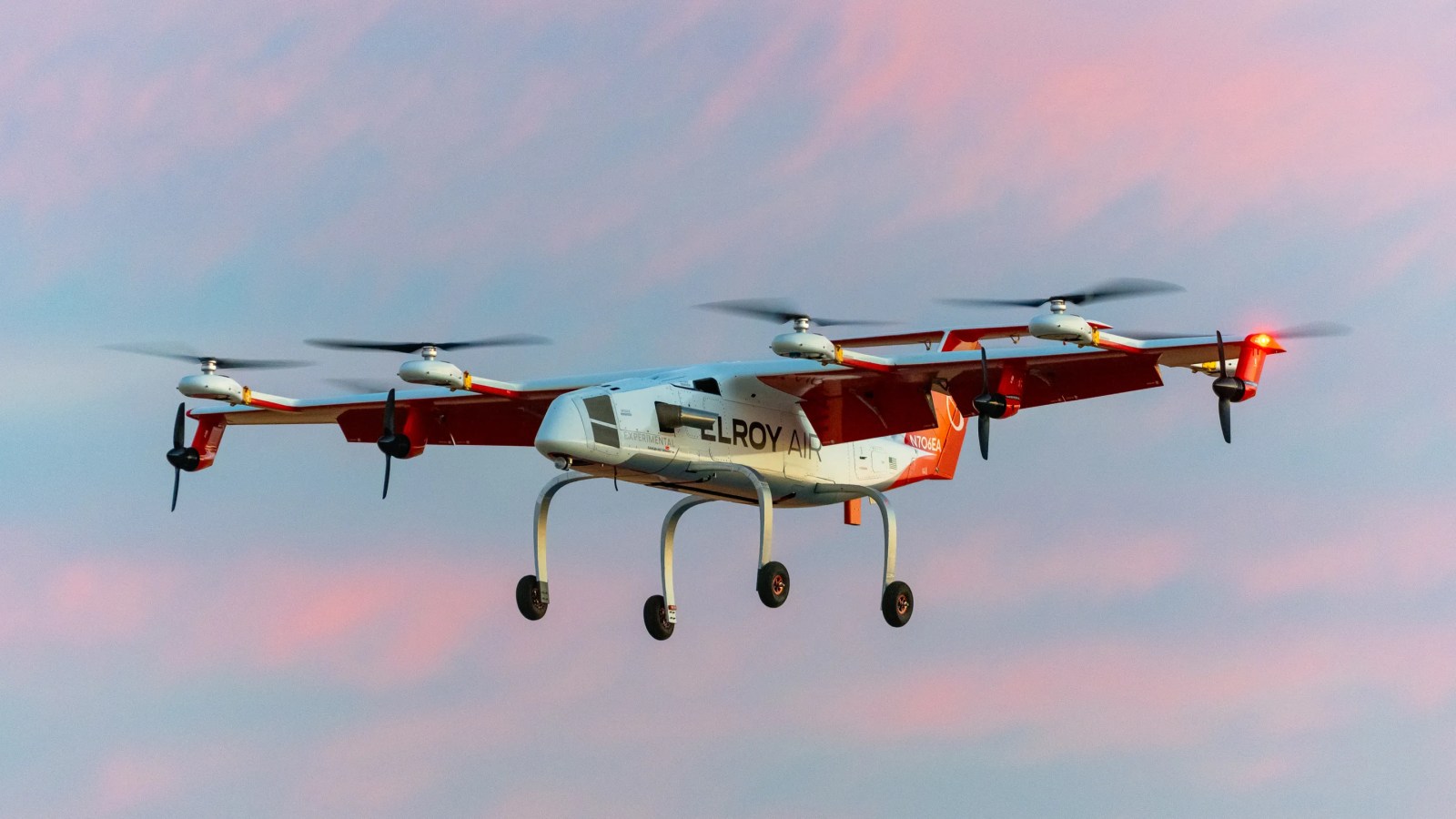
Cargo drone startup Elroy Air has announced a double milestone with the initial test flight of its C1 Chaparral freight UAV, which in turn represents what is thought to have been the sector’s first trial of a turbogenerator-hybrid electric vertical takeoff and landing (VTOL) plane.
Elroy said the maiden hover flight of its C1 Chaparral cargo drone took place at a desert airstrip in the region of its San Francisco home base, lasting 57 seconds after the craft’s upper eight rotors powered its vertical takeoff. The successful test was not only notable as being the UAV’s first aerial jaunt but one that occurred a relatively short six years after the program to create it was launched to boot.
As such, it represents the biggest development yet for the company’s next-generation air freight project that has generated considerable client interest.
Elroy’s end-to-end, autonomous logistics and delivery drone can carry a maximum of 500 pounds of cargo up to 300 miles. Unlike traditional freight planes, the C1 Chaparral’s eight vertical, five forward rotor propulsion system enables it to take off and land without a runway – including beside freight warehouses and logistics hubs.
Once there, the loading and dropping off of packages occurs in lightweight, aerodynamic pods that – after being packed with payload – are automatically picked up from the tarmac by the plane. Those features have convinced business, humanitarian, and defense organizations to place some $3 billion in orders with Elroy for its cargo drone.
Yet it’s the craft’s turbogenerator-hybrid electric power system – which essentially uses rotor movement to generate charge for its batteries – that distinguishes the C1 Chaparral from other heavy freight transport UAVs.
Dronamics’ Black Swan, for example, uses fossil fuel engines to lift its 770 lbs maximum payloads over distances as far as 1,500 miles. Saberwing’s Rhaegal-A also relies on internal combustion power to tote its 829 lbs. capacity 1,150 miles.
For that reason, Elroy and its growing list of clients believe the C1 Chaparral’s hybrid, self-generating power architecture now represents the best compromise between exclusively battery-powered planes being developed for air taxi use – but whose weight and distance capacities are very limited – and the long- and heavy-haul capabilities of traditional cargo plane fuel systems.
“Turbogenerator-hybrid architecture addresses the limitations of all-electric systems by combining a gas turbine-driven generator with batteries – enabling long-range missions (a ‘must-have’ for logistics) without requiring charging infrastructure, as well as safe redundant flight for autonomous operations,” the company explained in its test flight announcement.
With that precedent-setting trial under its belt, Elroy now begins the long developmental path toward pre-production and Type Certification that – if successful – promises more milestones along the way.
“This is an exhilarating day for our team and the industry as a whole,” said Elroy Air CEO Dave Merrill following the maiden test flight. “Our Chaparral C1 became the first turbogenerator-hybrid electric hVTOL aircraft to take flight. This marks a major moment for the industry as hybrid-electric aircraft enable the dual benefits of runway-independent safe redundant propulsion, and long-range flight well in excess of battery power alone. Our accomplishment puts Elroy Air one step closer to delivering a transformative logistics capability to our customers and partners.”
FTC: We use income earning auto affiliate links. More.



Comments